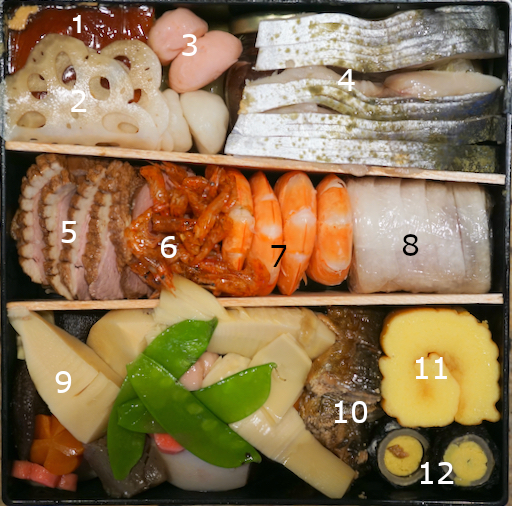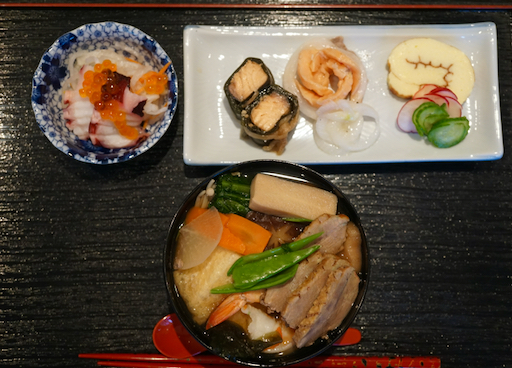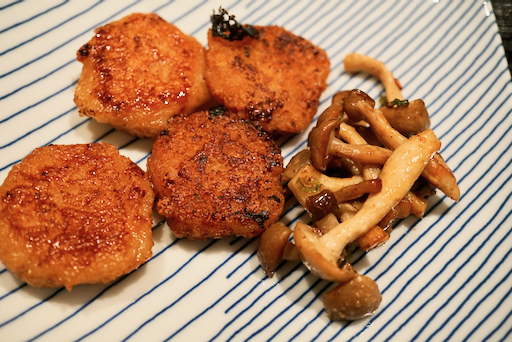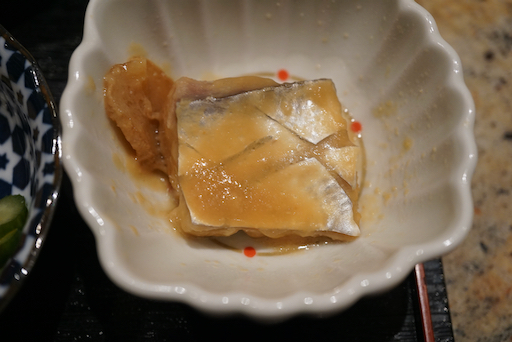For New Year's eve, we started with this sashimi. I ordered Atlantic tuna toro 鮪とろ, octopus leg 蛸, and ikura イクラ (all frozen) from Catalina offshore products at least a month ahead of time because last year I waited too long and when I got around to ordering sashimi for New Year they were sold out. I also got sashimi-grade salmon but it was a large piece and would have been too much so I did not thaw it. The toro piece was small (5oz) but enough for two of us. It contained "ootro" 大トロ and small portion of "chutoro" 中トロ. The octopus legs appeared to have been imported from Japan.
Wednesday, January 13, 2021
New year's eve sashimi 2020 年越しの刺身
Sunday, January 10, 2021
Duck leg confit 鴨足のコンフィ
Contemplating Christmas dinner, we decided we weren’t up for Turkey or ham. Then we saw a video from the Washington post regarding Duck leg confit and thought this would be perfect. We could make it ahead of time and just brown the skin before serving. Since we were getting some other meat from D'Atagnan, we ordered duck legs and rendered duck fat as well. In addition to the confit duck we served blackened Brussels sprouts and stuffing balls (without the broccoli).
Ingredients: (we cooked 4 legs)
4 duck legs (from D'Artagnan, #1 and #2)
Few sprigs of rosemary (or thyme, we used rosemary from our herb garden) (#3)
4 crushed garlic (#3)
Kosher salt
21 oz (3, 7oz containers = 21 oz.) of rendered duck fat
Directions:
In a sealable container which snugly fits 4 legs, salt the bottom, place the duck legs, salt the skin side, add the sprigs of rosemary, and crushed garlic, close the lid and refrigerate overnight (#3)
Next day, remove the rosemary and place the legs in a slow cooker and pour in the rendered duck fat to cover (#4), transfer the crushed garlic. In a low setting cook the duck legs for 3 hours with a lid on (original recipe used a 250F oven). The meat retracts from the leg bone (#5) indicating it is done. Transfer the duck fat and legs to the sealable container and refrigerate until serving (the recipe said it will keep for a few months and the flavor will improve).

Thursday, January 7, 2021
Osechi day 1 and day 2, 2021 元旦と2日の御節
This is the second plate; in the center next to the ikura is monkfish liver terrine 鮟肝豆腐 which is really good. I put wasabi and soy sauce on the red and white fishcake 紅白蒲鉾 before enjoying.
The yellow ball is soy sauce marinated egg yolk with walnut embedded in the center 黄身胡桃. The texture is really great. Next to the egg yolk on the right is "Koji-pickled Boston mackerel" 鯖麹漬. This is also a great dish with crunchy cubes of either daikon or radish.
Monday, January 4, 2021
Sushi Taro Osechi 2021 寿司太郎の御節 2021
Everything was carefully prepared and packed. All possible superlative adjectives can not begin to describe how wonderful each dish was. I do not know how many orders they prepare but I got some glimpse of how much work this is from Chef Kitayama's instagram "chefmasayakitayama" and "togimax". Our only task now is to enjoy all these delicacies, something we are very good at.
Friday, January 1, 2021
Happy New Year 2021 あけましておめでとう2021
The year 2020 was a quite taxing year. We hope things will get better in 2021, although we are, by no means, out of woods. Because of Covid, we stopped going to our Japanese grocery store (or many other stores for that matter). Having home delivery was a God-send. Nonetheless, however, we were not able to get all of our usual New Year food items or decorations including "Kagami-mochi" 鏡餅. (There may be a silver lining in this since we almost never eat all the small round mochi contained in it). So, this year our New Year's display was absent the Kagami-mochi. We only displayed the zodiac animal figurines representing the year--which in this case was the Ox. The pictures below show our collection of zodiac oxen. The smallest guy, in front, looks like a holstein cow and is made of painted wood. The one standing behind and looking at him is made from "do-rei" 土鈴 or earthenware and is actually a bell.
Wednesday, December 30, 2020
Renkon "lotus root" mochi 蓮根餅
This is on the theme of what you can make from fresh lotus root. This is similar to renkon ball レンコンまんじゅう but instead of deep frying, this was pan fried. I also sautéed shimeji mushroom in the same pan as a side. The Japanese name for this is "renkon mochi" レンコンもち. This is called “mochi” because it has the consistency of freshly made "mochi" 餅 cake made from rice.
Ingredients:
Grated fresh "renkon" lotus root, skin peeled and grated and excess moisture drained out (about 100grams for 8 small discs).
2 tbs potato starch or "katakuri-ko" 片栗粉
2 tsp butter
2 tps each of soy sauce and mirin
Directions:
Mix the grated renkon and potato starch in a bowl, divide into 8 small balls.
Melt the butter in a non-stick frying pan. Flatten the renkon balls into small disks and cook a few minutes on both sides until brown.
Add the mirin and soy sauce.
Saturday, December 19, 2020
Appetizers 4 kinds お通し4種類
Ingredients:
3 Japanese eggplant
2 tbs neutral vegetable oil
two small pieces of ginger, crushed with the side of the knife.
250ml Japanese dashi broth (I made this with my usual bonito and kelp dashi pack)
3 tbs soy sauce
3 tbs mirin
(Instead of soy sauce, I am using "shirodashi" 白だしand light colored soy sauce).
Directions:
Cut the eggplants in half lengthwise. Shallowly cut the skin in crosshatching pattern and then cut lengthwise again to make 1/4 eggplant.
Add the oil to a frying pan on medium flame and add the ginger for a few minutes until fragrant.
Add the eggplants skin-side down and fry for 3-4 minutes and turn over to fry both of the fresh sides for 2-3 minutes each,
Add the seasonings and broth (below), put on the lid and simmer for 3-4 minutes.
This is good eaten hot right after it is cooked but it can also be stored in the broth in a sealable container in the refrigerator. The stored eggplant can be eaten cold or heated up in the microwave.
This is usual salmon nanban. This one was really good since the quality of the salmon (from Whole foods) was good and I did not over cook it. I served this with sugar snap in salt broth スナップ豌豆の塩びたし.
Mr. and Mrs. Segawa of Tako Grill kindly gave us "kazunoko" herring roe 数の子. I prepared it as I described in my New Year dish tab. The half serving shown below was soaked in dashi broth with soy sauce and mirin seasoning. I marinated the other half serving in sake-lee and miso mixture or "kasu-miso" 粕味噌. Since this preparation will last longer than the one soaked in dashi broth we will eat it closer to the holidays.
I also served Spanish mackerel in miso sauce 鯖の味噌煮. (The red dots surrounding the mackerel are part to the decoration of the bowel not part of the preparation.)
This was a quite a good starter line up for the evening.































